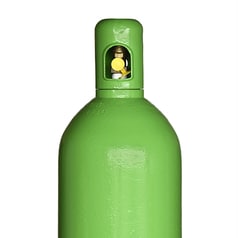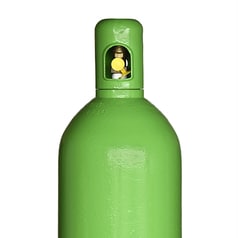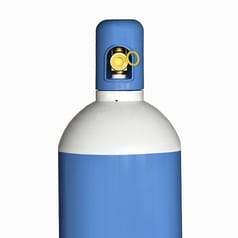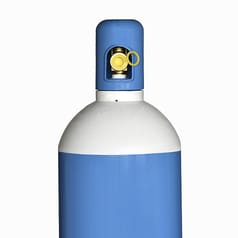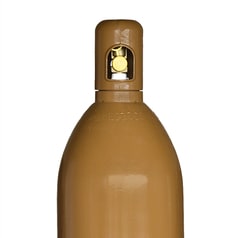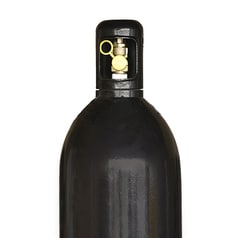you are currently visiting our website in a browser that is not supporting our website.
Laser welding
Compared to conventional welding processes (MAG, TIG, etc.), laser beam welding offers a more focused heat input, less distortion and high welding speeds
The plasma generated by the laser beam can be influenced by the process gas in such a way that a stable and safe welding process is achieved. The choice of process gas can therefore be decisive for the economic efficiency of laser welding. For example, aluminum, brass, thermoplastics and steel are suitable for laser beam welding. Helium, argon, nitrogen and mixed gases in LASGON® grade are used as shielding and process gases.
More information
Functional principle
Depending on the laser type, the laser beam generated in the beam source is directed to the workpiece with mirror systems or optical fibers and then focused on the workpiece. On the workpiece surface, the laser light is absorbed and converted into heat. During the relative movement between the focused laser beam and the workpiece, the workpiece melts due to the energy of the laser and a weld seam is created. Not every welding seam setup is suitable for laser welding. There are four standard types:
- Butt joint (I-seam)
- Overlap joint (fillet weld)
- Overlap joint (I-seam)
- Face weld
In laser beam welding, it is particularly important that the joining partners are clamped and aligned correctly and as gap-free as possible. If the gap is larger than approx. 10% of the sheet thickness, the laser beam can no longer transfer any energy and simply radiates through the seam. Welding errors are the result. A suitable surface structure is equally important. If the workpiece surface is too reflective, the laser energy cannot be absorbed by the workpiece and therefore does not melt. This effect can occur, for example, with blank aluminum.
Process variants
There are essentially two different ways to weld with the laser beam:
- Heat conduction welding: Through thermal conduction, the energy introduced at the surface flows into the workpiece.
- Deep penetrating welding: Due to the formation of a vapor capillary, the laser beam penetrates deeply into the material.
Thermal conductivity welding is typical of welding with lower laser beam power (<500 W), here the intensity is not sufficient to form a vapor capillary. The weld seam is relatively wide and flat. Deep welding is observed when the intensity of the laser beam is at least 105 W/mm2, i.e. regularly when high power lasers are used. The material is melted and partially evaporated in the process. The vapor pressure displaces the melt so that a vapor capillary (keyhole) can form. The absorption rate of the laser radiation is particularly high in the vapor capillary, since the laser radiation is reflected several times on the walls, each time transferring energy to the material. As a result, deep, slim welds up to a depth of 20 mm and more can be produced. During deep welding, conditions are sometimes present in the vapor capillary that are called "plasma" in physics, e.g., ionized metal vapor and high temperatures well above 10,000 K. The plasma absorbs the laser radiation. The plasma absorbs the laser radiation very well and helps to transfer the energy of the laser beam into the material. The resulting high pressure in the vapor capillary pushes metal vapor/plasma upward and forms a plasma flame or plasma cloud. Depending on the expansion of this light spot or cloud, the laser radiation is also absorbed, defocused and expanded, changing the focal spot size, focus position and intensity. This results in a reduced weld depth and T-shaped seam cross-section due to the higher heat input by the plasma cloud at the top of the workpiece. If the absorption by the plasma cloud is too strong, the welding process even breaks down completely. The plasma cloud is characterized by an intense blue glow and consists of metal atoms, ions and electrons, as well as components of the surrounding gas atmosphere. A plasma can also be generated in a pure gas atmosphere, especially when argon is used. Due to the shorter wavelength of the Nd:YAG laser radiation compared to the CO2 laser radiation, there is less interaction with the plasma cloud above the vapor capillary above the workpiece. Therefore, these types of problems are much less common here.
Laser gases
For the metal industry, the laser has become an important production tool. Operations such as cutting, welding and surface treatment are increasingly carried out using an industrial laser thanks to its high quality and high speed. Lasers used for this purpose are the well-known solid-state lasers and CO2 lasers. Within the technology of laser applications, the laser and process gases play a very important role. They not only determine the quality and power of the laser beam, but are also essential for the result. Whether this is the quality of the cut and the cutting speed or the quality of the laser weld, the right type of gas, its purity and availability play a major role. Linde Gas is well aware of this and therefore pays full attention to these aspects. Because the quality and purity of the gases and gas mixtures used are extremely important for the optimal functioning of the laser, Linde Gas Benelux has developed a separate product line, recognizable by the SpeciaLaser® logo. For laser gases, carbon dioxide, nitrogen and helium or a mixture of these three components are considered, which are supplied under the name SpeciaLaser®. Among the process gases, a distinction is made between the gases for cutting (oxygen and nitrogen) and the shielding gases for laser welding.
Laser gas mixtures
In addition to lasers with a built-in mixing unit, there are also those that use a special pre-mixed laser gas (pre-mix), which consists of the same components (carbon dioxide, nitrogen and helium). Again, purity is of the utmost importance. In order to exploit the power of the laser and maximize the lifetime of the resonator, a high-purity gas must be used. For the various lasers, these mixtures are produced under the name SpeciaLaser®. The percentage composition of the laser gas mixture is determined by the laser manufacturer and is not always the same. The following mix ratios are available from stock. Other compositions can of course be supplied to order.


